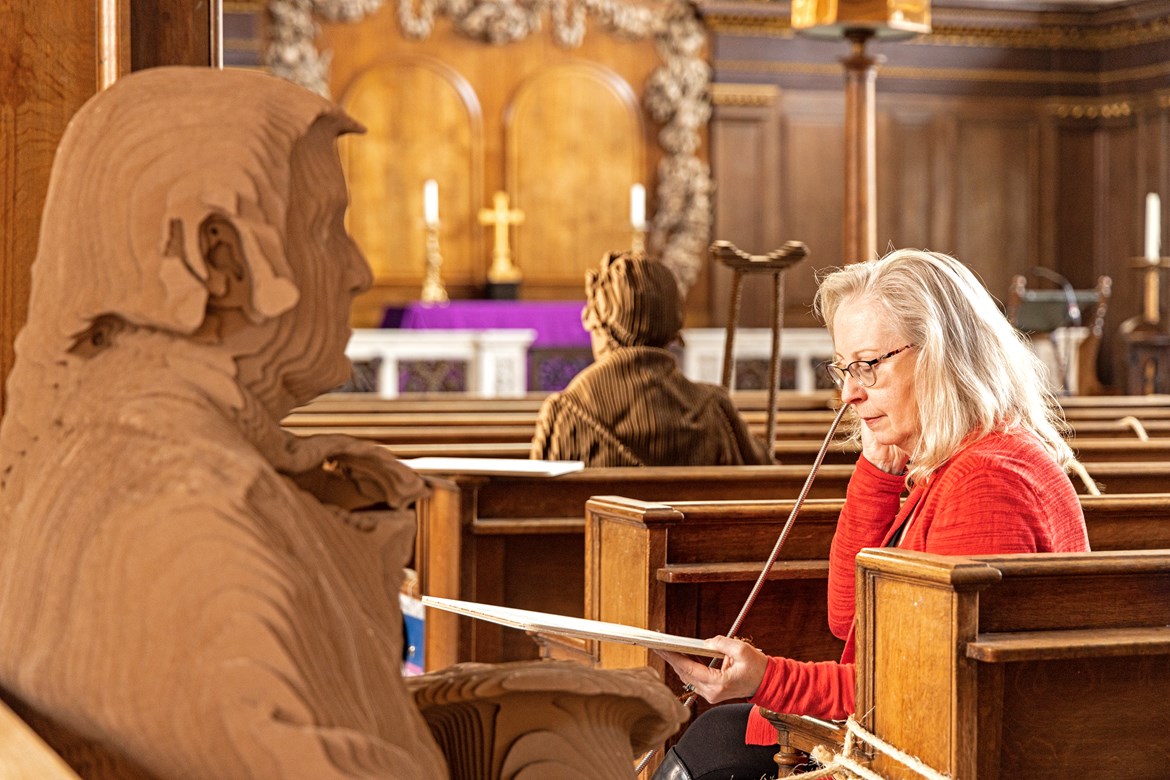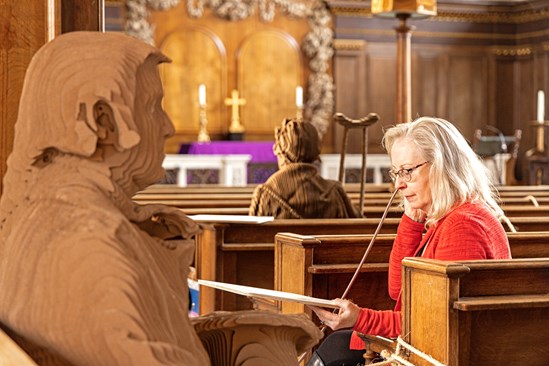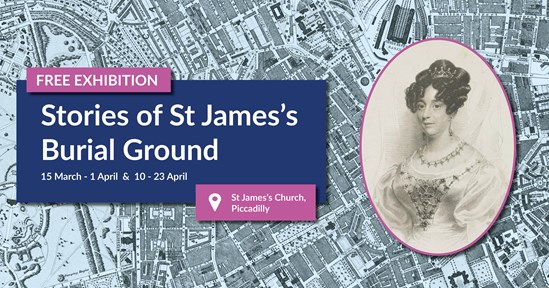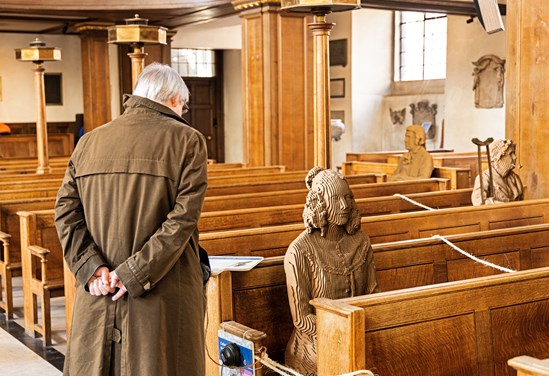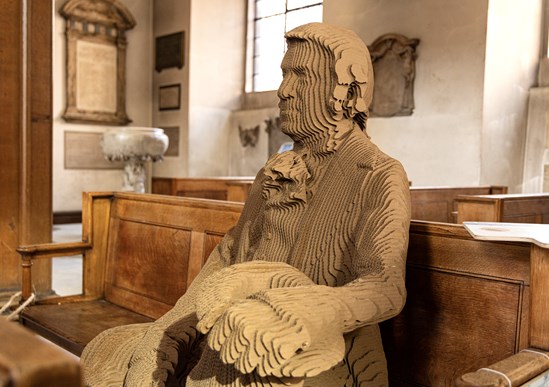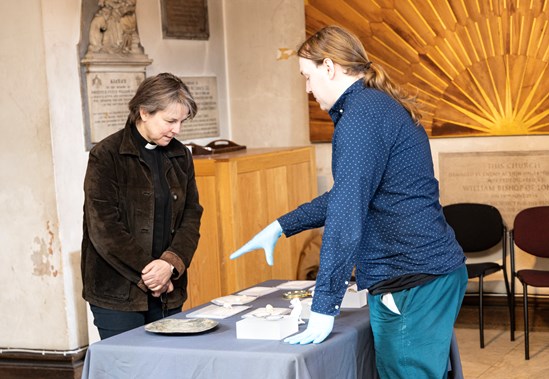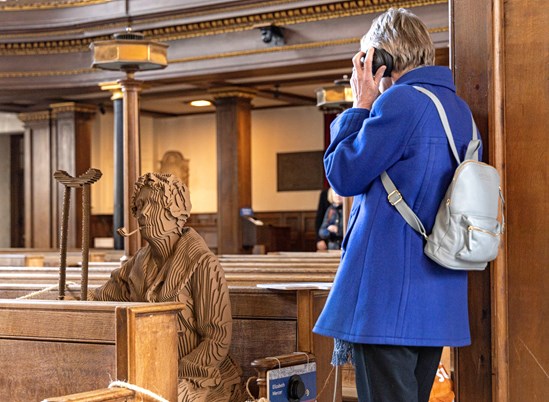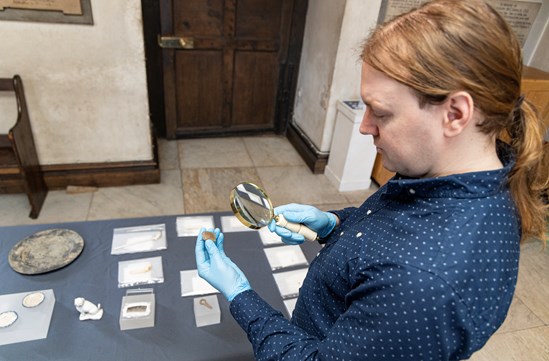A free exhibition revealing the life stories of Londoners during the 1700s and 1800s offers something different for a London day out this Spring. Opening to the public on Wednesday 15th March at St James’s Church on Piccadilly, visitors will be able to enjoy an interactive art installation exploring the lives of five people who were buried at St James’s Burial Ground next to Euston Station. The exhibition is part of High Speed Two’s archaeology programme.
Run by Museum of London Archaeology (MOLA), one of the companies behind the archaeological excavation of the burial ground, the exhibition will be suitable for the whole family with the voices of past Londoners brought back to life through a captivating audio experience. It will give a unique insight into how people lived in a time of incredible growth and change in London.
The burial ground is linked to the church on Piccadilly, as the land in Euston was bought in 1788 by St James’s Church Piccadilly for use as an extra burial ground for the parish between 1790 – 1853, making the venue a fitting host for the exhibition.
Over 57,000 people were buried at St James’s Burial Ground and HS2’s archaeologists learnt about how the site was set out in sections, according to how much the deceased or their families could pay. The exhibition highlights how people were buried and explores some of the unusual objects they were buried with.
Stories of St James’s Burial Ground will delve into the lives of a variety of people from across the Capital - from a lady buried with her pet parakeet, to dressmaker Elizabeth Mercer and luxury business owner Charles Fortnum, the grandson of one of the co-Founders of Fortnum and Mason.
Helen Wass, Head of Historic Environment at HS2, said:
“The careful excavation of St James’s Burial Ground next to Euston station has been one of the largest investigations on HS2’s extensive archaeological programme. The work was carried out with dignity, care and respect, and in keeping with those values, this exhibition will honour and tell the stories of the lives of those buried there. The interactive exhibition will be a thought-provoking insight into what life was like in London during a time of great social and economic change.”
Louise Fowler, Museum of London Archaeology, said:
“St James’s Burial Ground is a hugely significant project for archaeologists. Our ongoing research into the site is giving us the opportunity to ask important questions about a time of great change for London, creating a new picture of the people who lived in the Capital during the 1700s and 1800s. People from all levels of London’s society were buried at St James’s Burial Ground, from an earl to inmates from a workhouse in Soho. We’re really looking forward to sharing some of their fascinating stories in this new exhibition.”
The Revd Lucy Winkett, Rector of St James’s Church Piccadilly, said:
“The story of St James’s is the story of London. We’re looking forward to meeting our parishioners from the past, with such a wide variety of life experience, background and belief. Their stories intertwine with the modern-day parish of St James’s, Piccadilly and Soho, where everything has changed, but some things haven’t changed at all.”
HS2 Ltd, working with the Archbishops’ Council of the Church of England, agreed with Brookwood Cemetery in Surrey that reburials as a result of excavations at St James’s Gardens take place there. The site has a long history London reburials, and the reburials will be marked with a monument to commemorate those reinterred there.
The exhibition will run from 15th March to 1st April, and 10th – 23rd April and will be open Monday to Saturday between 10am to 4:30pm and Sundays 12 - 6pm. There will also be two activity days where visitors will meet with archaeologists who worked on the dig and are involved in ongoing analysis, see some of the amazing finds that were uncovered and get a taster of how to transcribe records from the burial ground. The activity days will take place on Tuesday 11th April between 10am-4:30pm and Sunday 16th April between 1:30 – 4:30pm.
The exhibition will relocate later this year and will travel to Camden, giving more opportunities for people to learn more about the stories from the Burial Ground.
